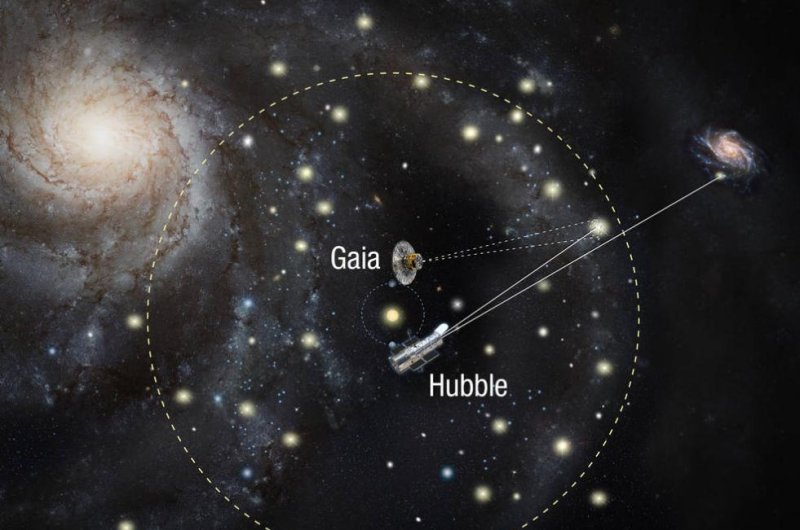Data from Hubble and Gaia helped astronomers calibrate the distances of Cepheids both inside and outside the Milkyway. Photo by NASA/ESA
July 12 (UPI) -- By combining the observations of the two most powerful space telescopes in orbit, scientists have achieved the most precise measurement of the Hubble constant, the universe's expansion rate.
The new measurement confirms the tension between explosion rate in the early and late universe, researchers report.
Astronomers can measure the expansion of the universe by measuring a galaxy's redshift, a change in the wavelength of the light due to a change in the velocity of the object. By measuring the redshift of galaxies using the Hubble Telescope, scientists have established the Hubble constant.
But investigations of the cosmic microwave background, the oldest radiation in the universe, can also be used to predict the universe's expansion rate. Maps of the microwave signature of the Big Bang, as measured by the Planck observatory, suggest an expansion rate different from the Hubble constant.
Until now, some scientists suggested tensions between the two measurements could be the result of an error or imprecision. But the latest measurements suggest a serious disconnect.
"With the addition of this new Gaia and Hubble Space Telescope data, we now have a serious tension with the Cosmic Microwave Background data," George Efstathiou, researcher at the Kavli Institute for Cosmology in England, told NASA.
Efstathiou assisted the Planck survey of the ancient universe, but did not participate in the newest research involving Hubble and Gaia.
"The tension seems to have grown into a full-blown incompatibility between our views of the early and late time universe," said Adam Riess, an astrophysicist at the Space Telescope Science Institute and the Johns Hopkins University. "At this point, clearly it's not simply some gross error in any one measurement."
In order to calculate the Hubble constant, scientists need to accurately measure the distance between two galaxies. The galaxy's redshift can then be compared to its distance from Earth, revealing its movement away from Earth. Over time, scientists can characterize the expansion of the universe.
The latest measurements by Gaia and Hubble allowed scientists to achieve extremely precise measurements of galactic distances. Scientists measure the distant of galaxies using pulsating stars called Cepheid variables. Cepheids' pulsating patterns are dictated by their intrinsic brightness. By comparing the star's intrinsic brightness with its apparent brightness, as measured by telescopes, scientists can calculate their distance from Earth.
Data from Hubble and Gaia helped astronomers calibrate the distances of Cepheids both inside and outside the Milky Way. The stellar mile-markers helped researchers achieve the most precise Hubble constant measurement to date.
Scientists detailed their new measurement this week in the Astrophysical Journal.















